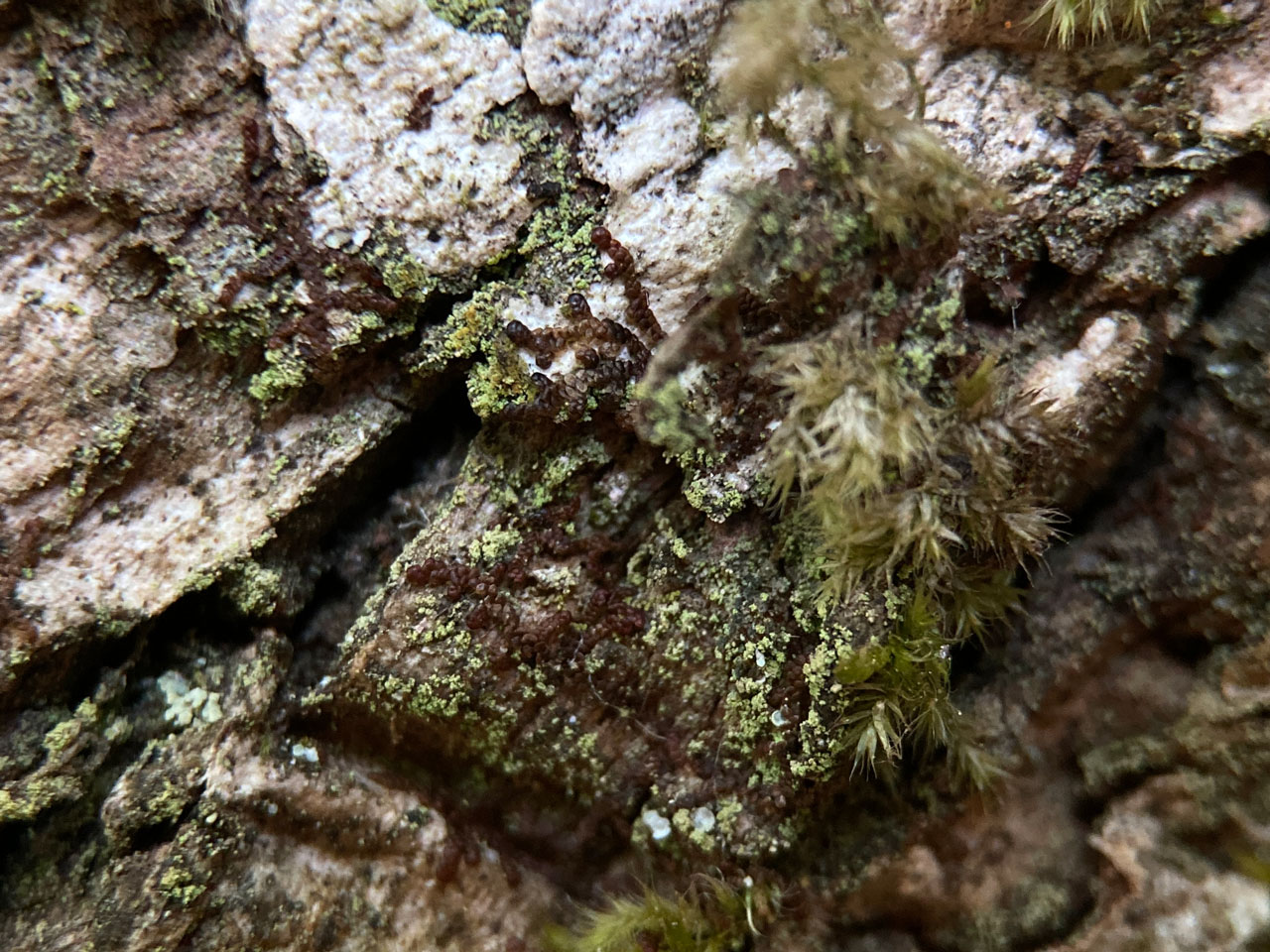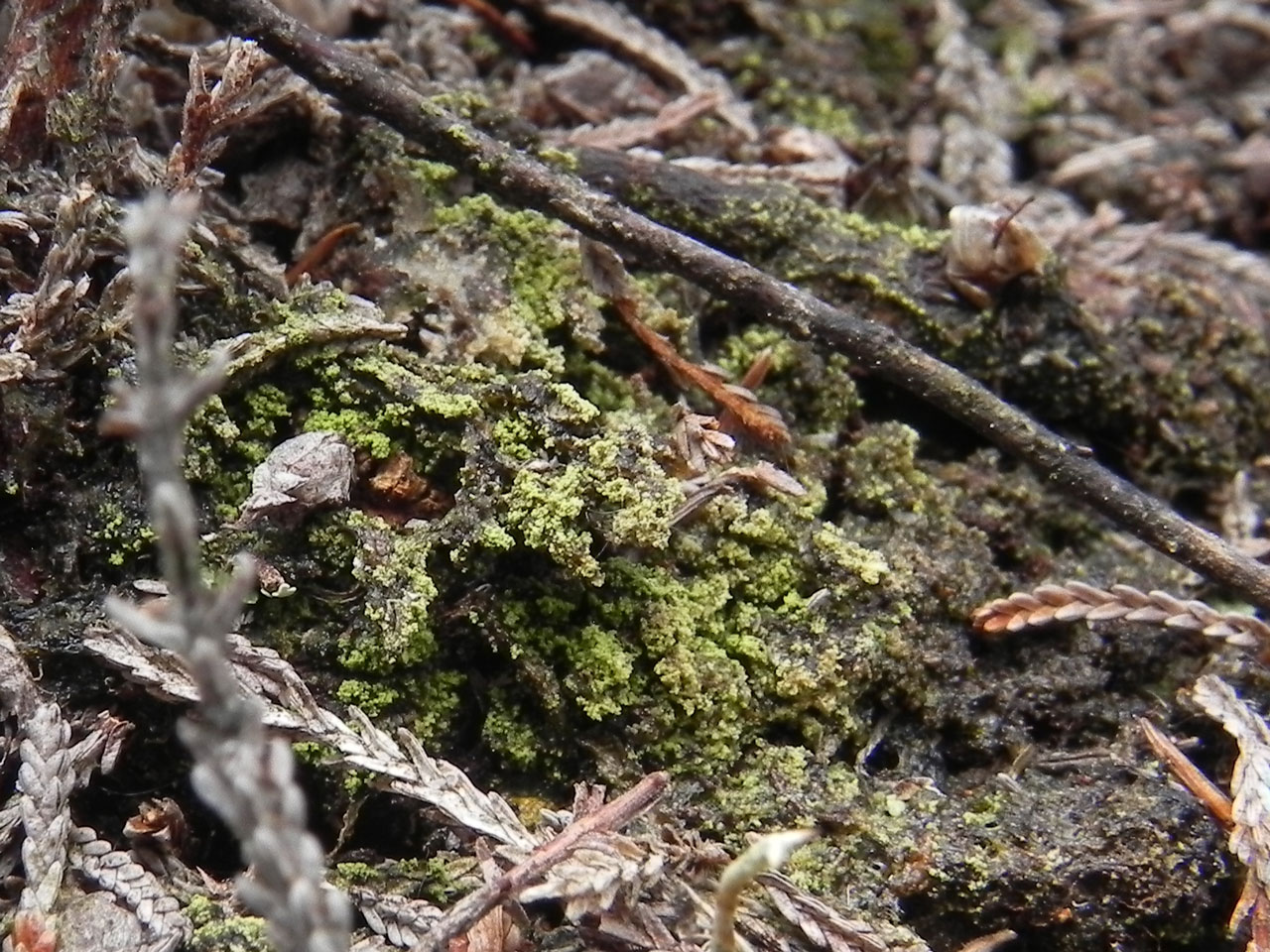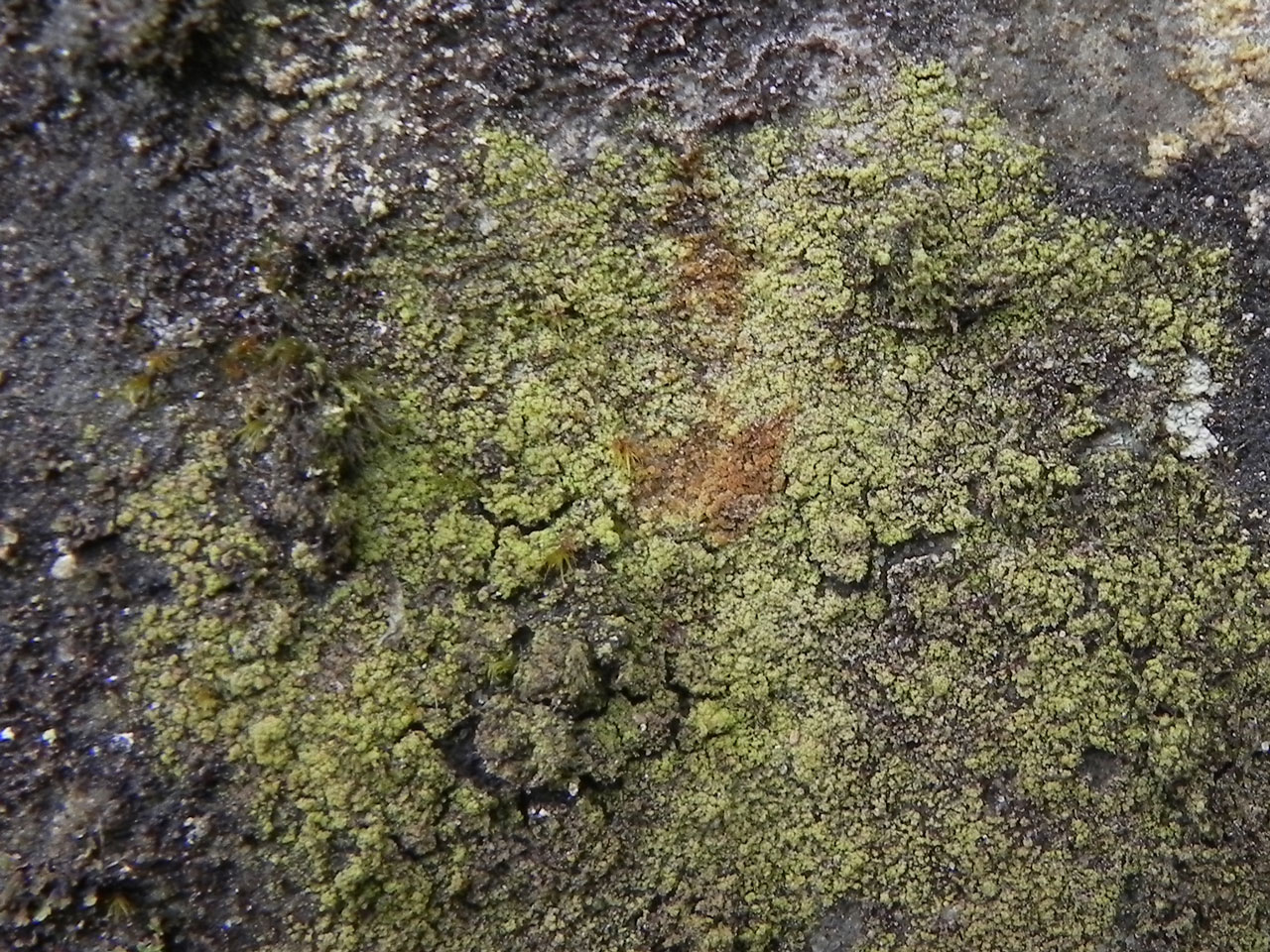Micarea xanthonica
An inconspicuous yellow granular crust, easily over looked as an indeterminate sterile M. prasina group species. However it is easily determined by its distinctive spot tests C+ and KC+ persistent orange & K/UV (wet)+ bright lime green along with UV+ dark orange fluorescence. An oceanic species, found on acid bark, lignum and occasionally peaty soil in moorland and heathland and on soft sandstone, mainly in the west.
Thallus light yellowish green, leprose, of ± globose goniocysts 16–28 μm diam. which sometimes coalesce to form granules to 40 μm diam.; hyphae colourless, K–; photobiont cells 4–7 μm diam. Apothecia very rare, (0.2–) 0.3–0.6 mm diam., or forming tuberculate clusters to 1.2 mm across, at first flattish and weakly marginate, but soon convex, immarginate or becoming tuberculate, whitish to pale straw; true exciple soon reflexed; epithecium colourless; hymenium 40–50 μm tall, colourless; hypothecium colourless; paraphyses 0.7–1 μm diam., to 1.5 μm diam. towards the apices, numerous, richly branched. Asci 36–38 × 8–12 μm. Ascospores 9.3–14 (–14.3) × (3.5–) 3.8–4.2 (–4.7) μm, cylindric-ovoid to cylindric-ellipsoidal, (0-)1(-3)-septate. Pycnidia not seen. Thallus C+ and KC+ persistent orange, K–, Pd–, UV+ dark orange, K/UV (wet)+ bright lime green (thiophanic acid, plus some additional xanthones in trace amounts); apothecium sections C± red (gyrophoric acid).
Distinguished from other members of the M. prasina group by its KC+ persistent orange thallus, which usually has a slightly yellowish tinge; otherwise similar to M. viridileprosa and light green forms of M. micrococca. The C+ pink reaction of M. viridileprosa often looks orange because of its bright green thallus, so filter paper should be used, and promptly because of the fleeting reaction. The K/UV (wet)+ bright lime green test for xanthones definitively separates M. xanthonica from all other M. prasina group species.
An oceanic species, mostly overgrowing moribund bryophytes on acid bark, lignum and occasionally peaty soil, also on soft sandstone (Wealden sandrock & in North York Moors), mainly in ancient woodlands; widespread.

Mainly W. Britain and Ireland but also in in North York Moors, Savernake Forest, New Forest and Sussex.
A local species found in high quality habitats in oceanic areas.
Britain: Notable & Internatinal Responsiblity species
Scotland: Priority Taxon for Biodiversity in Scotland
Cannon, P., Orange, A., Aptroot, A., Sanderson, N., Coppins, B. & Simkin, J. (2022). Lecanorales: Pilocarpaceae, including the genera Aquacidia, Byssoloma, Fellhanera, Fellhaneropsis, Leimonis and Micarea. Revisions of British and Irish Lichens 27: 1-48.
Text by Neil A Sanderson based on Canon et al (2022)




